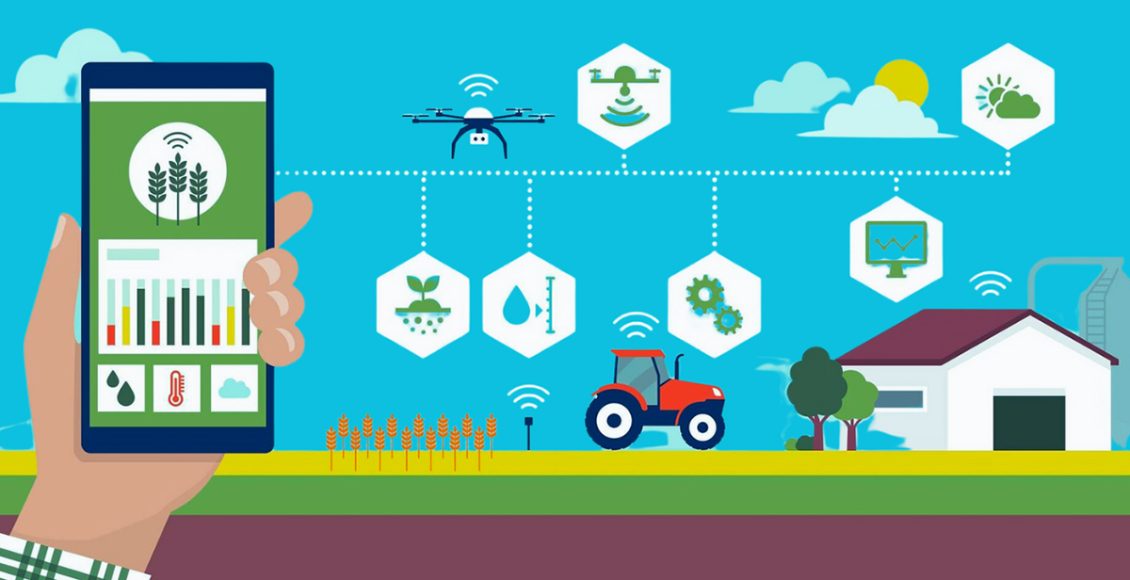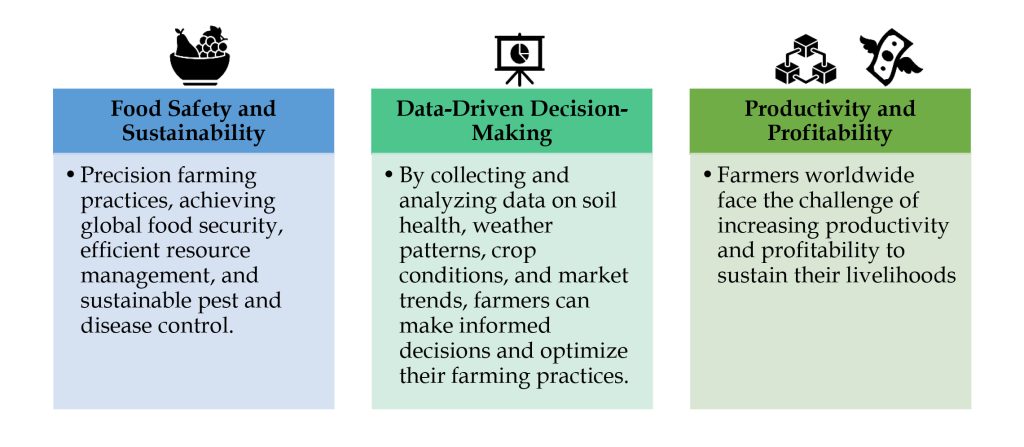
From Farm to Fork: Unleashing AgTech’s Potential Throughout the Value Chain
Technology use in Agriculture has leapfrogged since the last quarter of the 20th century. Over the past 50 years, technological advancements have expanded across the crop value chain – from seeds, on- and off-farm operations – especially in terms of scale, speed, and productivity of farm equipment, enabling improved and efficient cultivation of more land. Today, Technology in Agriculture, termed “Agtech”, is being used to make agriculture more efficient than it has ever been. Key areas where agtech is making a significant impact include –
- Precision farming, where technologies like sensors, drones, and satellite imagery are used to monitor and manage crops and soil conditions with precision. This helps optimize irrigation, fertilization, and pest control, improving yields and reducing input costs.
- Digital farm management systems that provide farmers with tools for planning, monitoring, and optimizing farm operations. These platforms enable farmers to access real-time information, make informed decisions, and streamline their day-to-day activities, increasing efficiency and productivity.
The combination of Agtech in the crop production schedule could cut down costs for crops – Maize (49%), Rice (43%), and Wheat (45%) due to increased productivity. By implementing innovative technologies, each farmer can save at least $16 annually, resulting in a $2 billion annual savings for the country.
Agriculture sector, though, has made strides; the challenges of limited resources, climate change coupled with an increasing population, increasing the efficiency and sustainability in the sector is critical. By harnessing the power of technology for data assimilation, analytics, and dissemination, Agtech has the potential to empower farmers, improve food safety, and contribute to a sustainable and resilient future for agriculture.
Why is Agtech essential?
 Current Agtech Scenario in India
Current Agtech Scenario in India
Over 1,000 agri-tech start-ups are based in India, being supported by venture capital funds and angel investors. Agtech companies in India have raised approximately $1.6 billion over the last four years. In 2022, venture capital firms invested more than $1.2 billion. These start-ups are focused on specific segments of the agri-food value chain to provide services to stakeholders with the objective of increasing efficiency, traceability, and profitability. Some innovative technologies in various segments of agtech include –
| Segments | Definition | Technologies | ||
| Pre-farm Services | Firms that provide the services that the farmer requires to produce the desired output level. |
|
||
| Input Aggregators | Aim at solving the gap in accessibility of agri input products for farmers in remote areas through e-commerce platforms. |
|
||
| Post-farm Services | The services required by farmers after the harvest to improve output quality assessment |
|
||
| Output Aggregators | Aims to offer supply chain solutions to eliminate the intermediaries and
provide produce to front-line business entities. |
|
||
| Integrators | Integrators aim to offer end-to-end business solutions by augmenting services across the agri value chain-on-farm level, agri-input supply, post-harvest assistance, and overall market linkage for farmers and their target buyers. |
|
By using Agtech, companies can contribute to improving the efficiency of agricultural operations and help increase the crop productivity and income of various value-chain stakeholders. Collaboration between governments, agricultural institutions, and technology providers helps drive technological innovation, ultimately benefiting farmers, food systems, and the sustainability of agriculture.
Way Forward
The Agtech sector in India is witnessing considerable growth and innovation. As the sector continues to grow, it holds the potential to not only transform India’s agriculture but also create new employment opportunities and contribute towards the growth of the country’s economy. Agtech can significantly add value in different layers along the value chain in agriculture and can also provide solutions to issues like food wastage, quality management, traceability, and post-harvest optimization by promoting sustainable practices, resource optimization and reducing the environmental footprint. By embracing AgTech and fostering a supportive ecosystem, we can unlock a future where agriculture is more productive, sustainable, resilient, and inclusive, ensuring a brighter and more prosperous future for posterity.
Author

Connect with Authors at: E-mail agribusiness@sathguru.com
 Grow Beyond
Grow Beyond 

